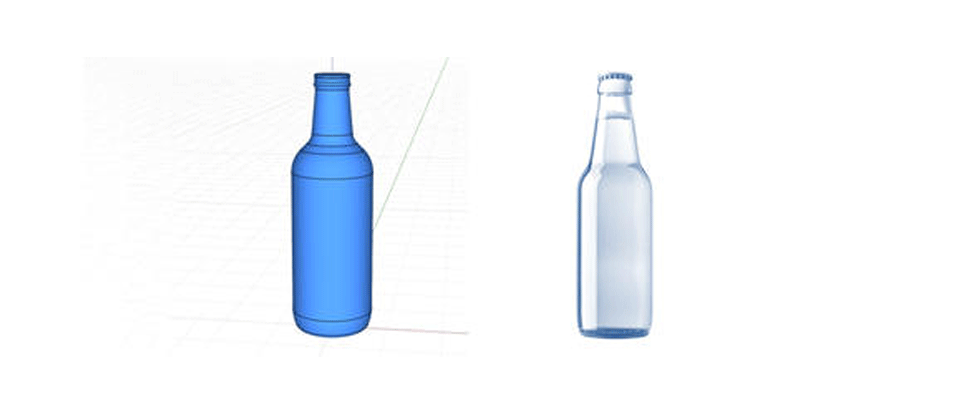SIPA covers PET packaging solutions from design concept to final production. The company’s official software of choice is Siemens NX, but Cheng has incorporated a few new tools, including Shapr3D, into the toolset to improve communication with the client. “I use Shapr3D to create fast concept designs,” he says. “The app runs on tablets, so you can design anywhere. You can start creating a design even if you’re mid-flight on the way to a customer when an idea strikes.”
Designing a bottle starts with a customer conversation. Cheng gets an understanding of what the beverage is, the audience it is aimed at, how big the bottle should be, and what kind of characteristics the customer is looking for in the container shape. What is the level of elegance they’re going for? Is the beverage high-end or mainstream? Are there any special themes or characteristics that need to be reflected in the design?
During the initial conversation, Cheng is already at work, creating fast sketches on Shapr3D to show to the customer on the spot. Within an hour, he and the customer can go through several different design ideas, validating the direction and providing a base for strong advanced concepts.
“With an iPad, the customer can look at bottle designs from all sides on the screen, instead of just looking at a 2D drawing,” says Cheng. “With legacy software, you can’t show the client different views on an iPad. This can lead to confusion; the customer might not understand what exactly the bottle would look like if the design was modified in a particular way.”
For Cheng, this often resulted in a time-consuming flurry of emails back and forth -- sending new views, implementing feedback, rinse and repeat. But with Shapr3D, the days-long feedback process boils down to just a few hours, allowing the team to move from idea to prototype in record time.
“Sometimes, the client wants to alter the fundamentals of the model, changing the entire outline of the base for example. With Shapr3D, I can edit the model and add modifications immediately, right there in the meeting room.” The new way of working brings greater freedom and flexibility. Working with clients across China, long-distance travel has been a necessary part of Cheng’s role. But unlike Cheng, his desktop software license can’t leave the office. Being able to sketch concepts in meeting rooms and modify them on the plane has been really useful for his workflow.
At the same time, Cheng is also in touch with the client’s marketing department, to match the design of the bottle with the brand’s overall identity. Modifications to the bottle shape can be implemented immediately, regardless of the size.
Once the initial curves are down, the team goes into industrial design. Cheng gets the outline shape and shares it again with the customer. “After the customer confirms the shape, we use Siemens NX to rebuild the final model for industrial production,” he says. He exports the shape as a reference onto his desktop software. Once the bottle CAD drawing done, he hands it off to the molding team.
Cheng is currently evaluating new ways of using Shapr3D. He hopes to use it for designing preforms as well as bottle concepts, which he says this could be an especially useful tool in bottle lightweighting projects.








